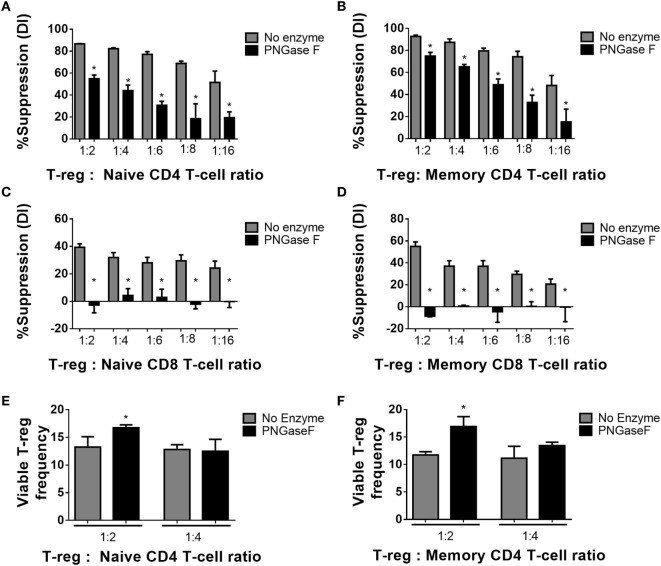Figure 6.
Manipulation of murine Treg surface N-glycosylation impairs suppressive potency. (A) Naïve and (B) memory CD4+ Tconv and (C) naïve and (D) memory CD8+ Tconv were cocultured in the presence of CD4−CD8− antigen presenting cells and no enzyme or PNGase F-treated Treg populations at Treg: responder T-cell ratios of 0:1, 1:2, 1:4, 1:6, 1:8, and 1:16 for 4 days with anti-CD3 stimulation. Suppressive function was quantified based on responder T-cell division index (DI) after 4 days and presented as the calculated percent suppression [%Suppression (DI)]. (E,F) Day 4 frequencies of viable Treg were expressed as percentages of the total viable cells (Viable Treg frequency) in the cocultures with (E) naïve and (F) memory CD4+ responder T-cells. Data represent mean ± SD (n = 3 technical replicates). Results were confirmed in three independent experiments. Statistical analysis was performed by permutation test with an unpaired design comparing the coculture with the different Treg populations to the no Treg condition (*p value ≤ 0.1).

